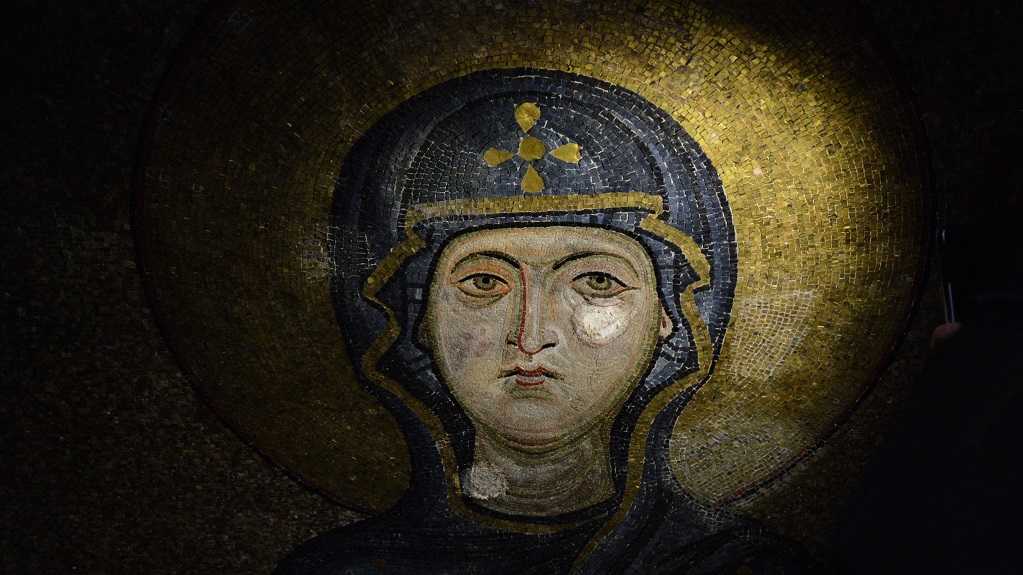After the heavy rainfall in Georgia, the situation in the main temple of the Gelati Monastery Complex, the Church of the Nativity of the Virgin, raises concerns. With the temporary tin roof over the altar removed for almost a month, experts fear that water may have seeped into the interior of the temple, further damaging the unique 12th-century mosaic under the conch.
News
Trending stories
- 1 BBC investigation: WWI–Era Chemical Weapons Used to Disperse Tbilisi Protests
- 2 Starting in 2026, First-Year Students at Private Universities Will No Longer Receive State Grants
- 3 NGOs Demand Answers on Which Chemical Substances MIA Used Against Protesters
- 4 Kobakhidze and Putin Attend International Forum on Neutrality in Turkmenistan
- 5 Zurabishvili Appeals to International Organisations to Investigate Possible Use of “Camite”
- 6 Geostat: The Average Salary in Georgia Is 2,271 GEL
"We do not have confirmed information on whether water has seeped in or not. We are relying on photos of the roof that were distributed from Gelati. The temporary tin roof covering the altar's conch has been removed for almost a month, and we do not know why. It is confirmed that the tile under which the mosaic is located is damaged and leaking water. It rained many times throughout the month, so it is likely that water got inside due to the damaged tile and lack of other protection," says Maka Bulia, an art historian and employee of the Georgian Art History and Monument Protection National Research Center named after Giorgi Chubinashvili.
The Chubinashvili Center, which authored a critical report on Gelati, remains outside the processes. The center's employees were last in Gelati in February. On the mosaic of the Mother of God, they observed signs of salting, as well as dampness and falling stones.

"The committee is obliged to inform the public and justify all decisions. This passion, caused by a lack of information, must be alleviated.
Obviously, the committee is responsible for the processes developed there, but at the same time, it is the responsibility of all citizens of our country to ensure that the process in Gelati adheres to international standards, as it is a monument on the UNESCO list. The committee should explain its decisions, inform us of the current situation, and make the closest photos of the mosaic public," says Maka Bulia.
Roberto Nardi, a mosaic specialist and director of the Institute of Archeology and Conservation in Rome, spoke about the deplorable condition of the mosaics at the beginning of July. In a video released by the Gelati Rehabilitation Committee, he stated that 89% of the mosaic has been removed from its base and is no longer in its original location. "All research and studies show that this mosaic cannot withstand any additional impact, whether it be an earthquake or any oscillation caused by various actions," said the Italian specialist.
"In fact, we sacrificed Gelati for the whole month, which was very rainy. Reports from leading specialists indicate that 80% of the unique mosaic is damaged. They say that this mosaic should not be removed at all. Now the alarm bell is ringing," says Nikoloz Vacheishvili, director of the Center for Cultural Heritage and Environmental Research.
Archimandrite Kirion (Oniani), deputy chairman of the Gelati Rehabilitation Committee, calls the information that water may have entered the temple due to the removal of the tin roof unfounded. As he said, "the condition of the mosaic has not changed much" in recent months.
"I don't understand what these Georgians want - should we cover Gelati with a single roof?! This is what UNESCO tells us, and we are implementing it. It was necessary to remove the scaffolding supporting the roof of the apse. We only covered the apse (where the mosaics are) with tin, which was inevitable because it was completely, 100% supported by the external scaffolding. Exactly two weeks after the start of the works, before it rained, we covered it with a special covering material. The section of the apse is protected - a few drops may fall from the sides. Additionally, in the history of the study of the monument, it was not observed that the apse suffered from infiltration over the years; this overlap was normal.
We are talking to people who have been in this business for decades and brought the mosaic to a critical state. If we hadn't intervened, it would have been impossible to save the mosaic; it would have fallen," Archimandrite Kirion said.
Regarding the removal of the mosaic, according to Father Kirion, this issue is not being discussed at this stage: "If Roberto Nardi says that to save the mosaic, it can be removed, the base must be treated, and then it can be reattached, that is probably true. But he has never said that the mosaic is removable and there is no other way. No! This person says that I have everything under control. I can't rule anything out, but I can't prove anything until I finish the research."
Georgian News asked the deputy chairman of the Gelati Rehabilitation Committee, Archimandrite Kirion (Oniani). If a response is received, the article will be updated.
Rehabilitation of the Gelati Monastery Complex was carried out by the Ministry of Culture. However, at the end of February 2023, the agency transferred the work to the Patriarchate, resulting in the creation of a temporary committee for the rehabilitation of Gelati. This was preceded by the Patriarchate's statement that the crisis of the 21st century at the Gelati Cathedral began as a result of the rehabilitation works performed in 2015-2019, and by 2021, the wall painting was in serious condition.















